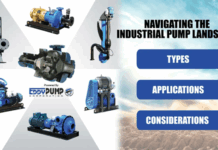As an employer, your employees’ safety in the workplace is your responsibility. Part of ensuring that they are safe is controlling the risks in their work environment. The idea behind it is to consider whatever it is in the working space that can harm the employee. From there, you take reasonable steps to prevent the harm. This is what is called a safety assessment. It is a requirement by law. However, employers with less than five employees do not have to keep the records.
Risk assessment helps you decide whether all that is necessary for a safe workplace has been covered. There are some risks that have assigned control measures according to regulations. Conducting a risk assessment also helps you to identify whatever it is that you need to control the risk. It is notable that control measures are assessed separately in the risk assessment process.
To shed some light, a risk assessment procedure is systematic. It identifies and manages hazards. This means that one has to examine all parts of the work environment, equipment, and processes to note any health hazards, whether they be long-term or short-term. From there, one can implement remedies. The two major benefits of this assessment are in compliance with the law and protecting one’s employees. However, assessments also promote employee awareness. A safety assessment should be carried out at the beginning of every project. It includes the following steps:
Hazard identification
Here, the expert combs through all your workplace to identify any potential hazard. The idea is to question all the activities, substances and processes that could cause injury. Since working in an area every day can cause one to be oblivious of the dangers, one can take certain steps when identifying hazards. For example, one could check manufacturer instructions where equipment and chemicals are concerned. Another way to gain perspective is to look at previous accidents and account for non-routine operations like maintenance. Do not forget to think about the long-term hazards as well.
Hazard analysis
Here, you will decide who it is that could get harmed and how that would happen. You might also want to find out from the employees what they think the dangers are. For each hazard, it needs to be clear who is in danger and how that risk can be controlled. Of course, you will not have to list people by name, but rather, their groups. Remember to consider workers with specific requirements such as people with disabilities or expectant mothers. While at it, put the public into account.
Risk management and control
Having identified and characterised the risks, here you are looking to define what can be done about the risks. Remember that it is impossible to eliminate the risks altogether, so management is what you are after. Your safety assessment should cover only what is reasonable. You will be looking to eliminate the risks that can be eliminated and to control those that cannot. Control could include trying less risky options, using protective gear, welfare facilities and changing the organisation of processes to reduce exposure.
Record keeping
The records should reflect all the hazards, the results of the hazard analysis and how each of them is controlled. Keeping detailed records allows you to review later should something change. Besides, with paperwork, you can give it to new employees when you are creating awareness. Sufficient records need to show also that the employees were involved in the process. Note that if you have a number of risks, they need to be in their order of importance.
Your workplace will be changing with time. You might bring new equipment, introduce new processes or start using new substances. As such, the process of evaluating safety and health must be continuous. You want to make sure that the records are up to date. An online contractor management system can help you ensure all workers are qualified and up to date on safety regulations while on site. For more information on how you can improve your internal systems contact an online contractor management supplier.
Find a Home-Based Business to Start-Up >>> Hundreds of Business Listings.

















































